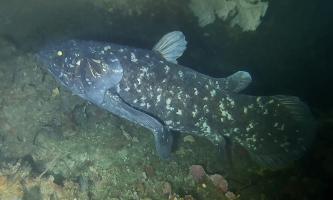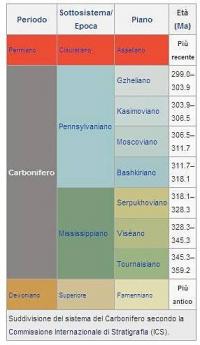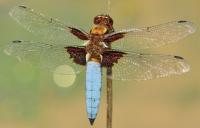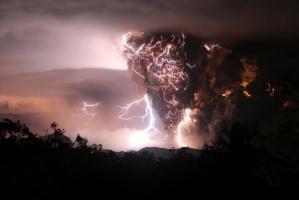Devonian
395 to 345 million years ago
Asia is now a single piece of land, Europe is approaching it and the reliefs of the Ural area (Uraudi) continue to "grow". Gondwana always moves north and consequently some areas of Europe and North America (Ercinidi) rise; these regions will later become the base of the Alps and the Appalachians. The compression of the zone between Europe and North America brings out various zones that were previously sea bottoms: these zones are covered with rocks formed by the sands (sandstones); the color of them is reddish and this whole "new" tongue of land is called the "continent of the old red sandstone". These old sands tell us, with interesting fossils, what happened on the shallow waters of the time. Greenland was crossed by the Equator: its land was covered by swamps and lakes. The North Pole was approaching Antarctica, while still remaining in the part of Gondwana that corresponds to southern Africa. On the southern continental block it is rather cold, but there are no real glaciations. The climate in the other continental areas is quite dry and hot with hot-humid phases limited only to the equatorial belt. The mainland environments are frequented by arthropods.

The first spiders, mites, millipedes and some wingless insects join the scorpions. In the sea the gigantostraci are in decay; the genera of the trilobites decrease; the tiny "sea spiders" (Pantopods) appear. The microscopic crustaceans Ostracodi and Branchiopodi (common as the daphnia, the "water flea") are already enormously widespread: both in marine waters and in inernal fresh waters, these arthropods and various larvae were the main constituents of plankton. Brachiopods are widely known but the group of Ammonites emerges: they are cephalopods in which the shell has various chambers and is wound in a spiral. These animals will remain on stage for over 300 million years and will be an essential element of the marine food chains. But let's come to vertebrates. The Devonians are often referred to as "age of fish". Vertebrates developed in the Ordovician and Silurian periods give rise to forms with new characteristics. As we know, the gills of cetalaspids were supported by a series of cartilaginous plates, the gill arches. Over time, the anterior gill arches transformed into a pincer structure. These are the jaws, on which dentin elements, the teeth, develop. For a long time the jaw will remain detached from the rest of the supporting structures of the anterior region: a real skull will form later. A few main groups are distinguished. The Acanthus have a head protected by bony plates and various tnangular fins: the appearance is already "fishy" (genus Climatius).
Placoderms, on the other hand, are very reminiscent of cephalaspids: they look like crabs with tails, but have mouths with jaws (the genera Pterichthvs and Borthrioleris are typical). The Arthrodiri whose head was protected by a powerful armor are also placoderms: the mouth was a real shear with serrated jaws but without real teeth. This head was followed by a tapered body (gigantic forms of the genus Dinichrhys, up to 8 m long). The arthrodirs have some affinities with the chimeras, current Cartilaginous Fishes. It was therefore proposed to consider these placoderini as "ancestors" of all cartilaginous fish.

We note that in all these animals there has been a radical change in eating habits: from consumers of debris and tiny particles of food they have become "biting". From tea strainers they have become active traps or shears.
The Earth was now covered with green. Even where the soil was rocky and virgin, algae and lichens had affected it, creating the conditions for the development of more advanced plants. The environment was finally ready to welcome the first animals, to offer them food and shelter. And they came. We don't know when, but we are sure they came from the water, leaving the seabed to venture onto land. Probably the first land animals were scorpions, spiders, cockroaches and millipedes, all descended from the marine scorpion, and all quite close to their present forms. With the cockroaches, the first wings fluttered in the air. Other pets soon learned to fly. They were mostly small insects with shapes quite different from the current ones, such as the six-winged Stemodictya whose fossil has come down to us enclosed in a marl from the Carboniferous period. Often they were predatory insects that prowled among the fronds of the primeval forests, hunting for other small animals. Typical of this period, for example, is a giant dragonfly, with a wingspan of 60 centimeters. The fossils of this epoch also reveal the presence of a large quantity of ferns, which are assuming ever larger dimensions.
The period was particularly favorable to the development of life. The heat was not excessive, but it was intense enough to stimulate the growth of plants. It rained frequently, and the precipitations gave rise to vast marshes, in which the plants found their ideal environment.





























